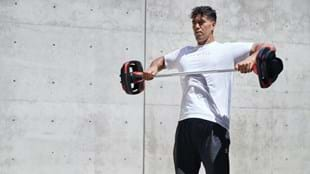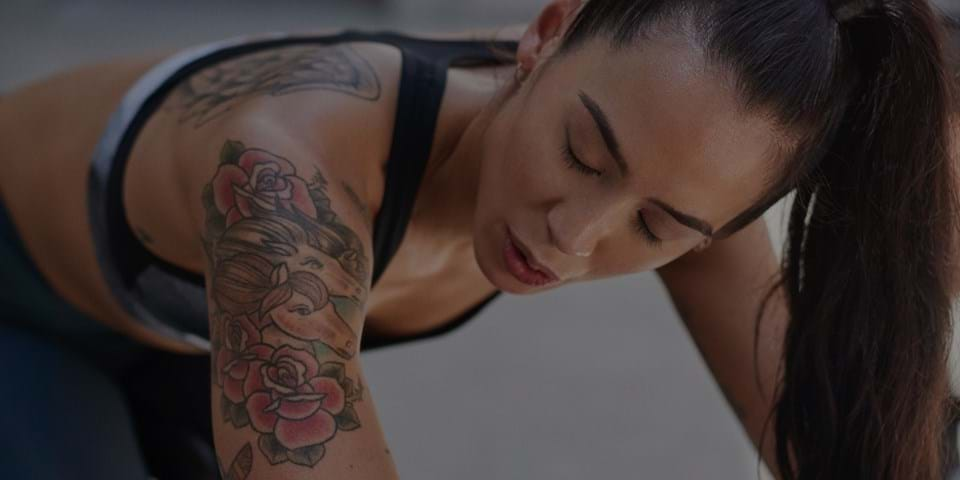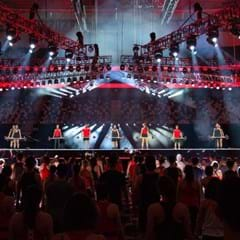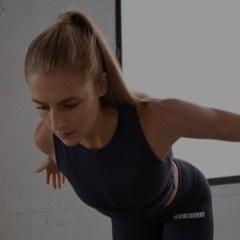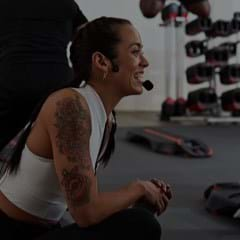What’s up with the heels up?
Have you noticed the recent addition of heel lifts in BODYPUMP™ with the high pull and squat combinations? Super cool innovations that feel powerful and useful… let’s chat about the details.
What muscles are active?
When you lift your heels up off the ground, you are performing ankle extension, and the muscles in the back of your lower leg are active. There are actually three muscles responsible for this movement: medial gastrocnemius (superficial, towards the body center), lateral gastrocnemius (superficial, away from the body center) and soleus (under gastrocnemius). These three muscles join at the lower end of the calf and share a tendon, the Achilles tendon, which attaches to the heel.
Fun fact: The Achilles tendon is the largest and strongest tendon in the body!
When are the calf muscles active during daily life?
The calf muscles play an important role in walking, running, stair climbing, cycling and jumping. They are the primary group for propulsion forward and upward during these common activities. Therefore, the gastrocnemius and soleus muscles are critical for successful execution of exercises in BODYATTACK™, BODYSTEP™, BODYCOMBAT™, LES MILLS GRIT™, and each of the dance and cycling programs.
Fun fact: There is a difference in the main function of the gastrocnemius and soleus muscles. The gastrocnemius muscles produce power (sprinting, jumping) while the soleus muscle enables endurance activity (standing, walking).
Why add the heel lift to the upright row and squat?
When the heel lift is added to the upright row and squat, there is extension at three joints: hip, knee and ankle. This is referred to as triple extension! At the bottom of a squat, all three joints are flexed. As you initiate the rise, the hips extend, followed by the knees, and finally the ankles. This final extension at the ankles provide additional power, increasing overall activation and enhancing lower leg training. It is important to keep these muscles engaged and healthy to assist in maximizing performance of sports that involve running and jumping as well as maintaining independence for the functional tasks of walking and stair climbing.
Fun fact: In order to increase the benefit of triple extension, execute the heel lift in the high pull and squat combination without a pause. The hip, knee, and ankle extension should be a fluid sequence.
What to say when coaching these integrated exercises?
Inform and educate your participants about triple extension. Explain that we are performing an integrated exercise with activity from the hip (glutes), knee (quads), and ankle (gastroc/soleus) muscles. Make sure to maintain the critical cues of consciously contracting the glutes and bracing the core as you rise up from a squat. Then add the heel lift component to fire the calf muscles.
Once your participants have the basic movement pattern, increase their enthusiasm by asking: Do you want to run faster? Jump higher? Walk longer? If so, bring on the triple extension!
Jinger S. Gottschall, Ph.D. earned her doctorate degree in integrative physiology from the University of Colorado at Boulder. She furthered her academic career as a postdoctoral fellow in neurophysiology at the Emory School of Medicine and as an Associate Professor in kinesiology at The Pennsylvania State University. She was also the founder and co-owner of FITOLOGY, a Les Mills group fitness studio. A passionate advocate for physical activity, Dr Gottschall has dedicated her career to finding programs that promote balanced, healthy lifestyle choices while delivering the results they promise.
You can find Jinger on Instagram and Facebook using the handle @jingerfitness



